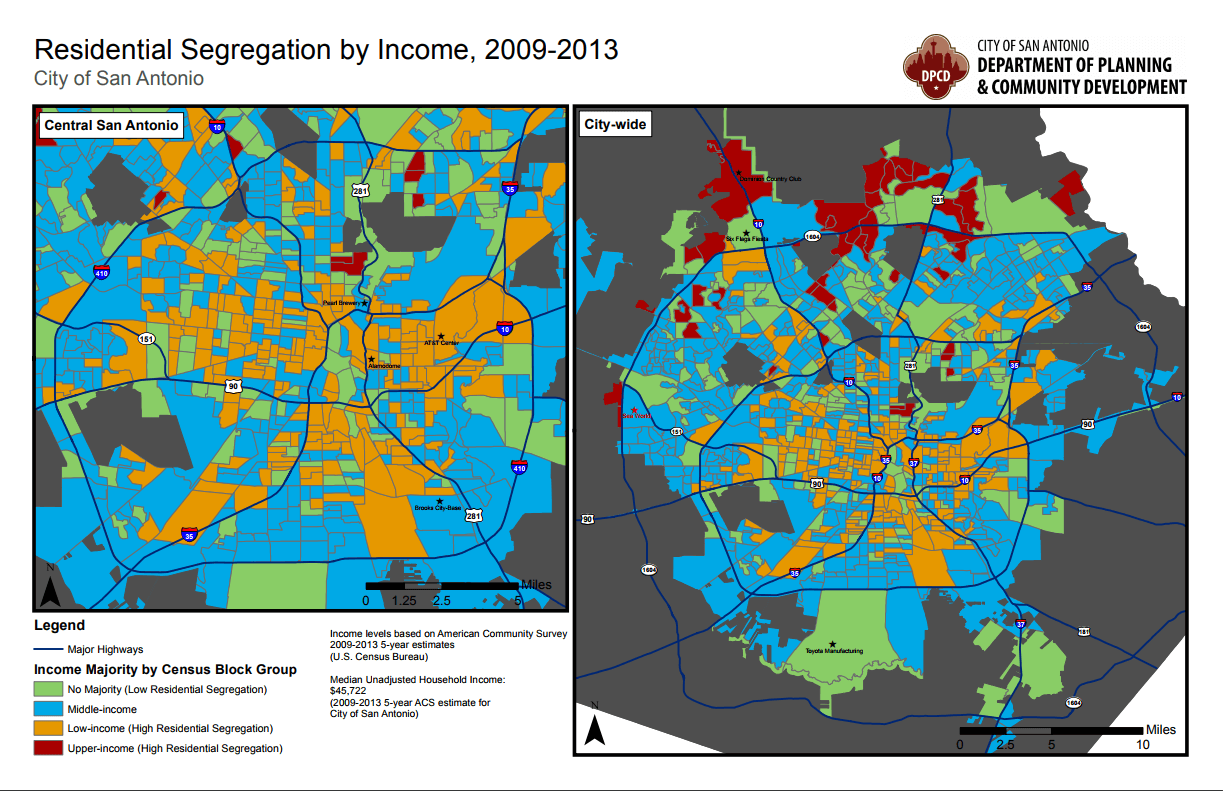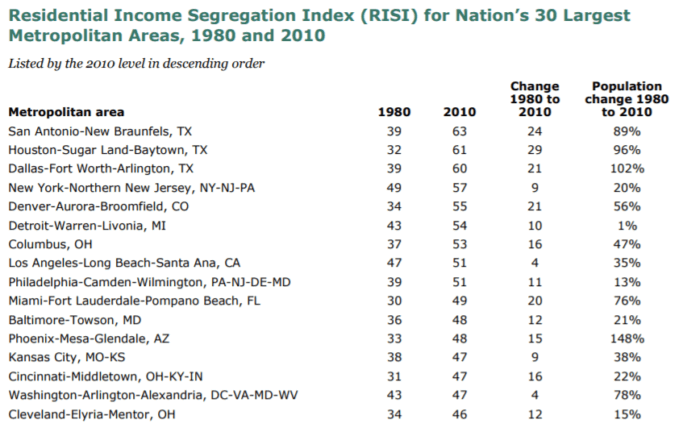
In 2012, the Pew Research Center released a report called the “Rise of Residential Segregation by Income,” featuring the Residential Income Segregation Index, or RISI.
The RISI “is the cumulative share of lower-income households living in a majority lower-income census tract combined with the share of upper-income households living in a majority upper-income census tract.” Lower-income is defined as making less than $34,000/year, while upper-income is defined as making more than $104,000/year.
A high RISI score means that wealthy residents have primarily wealthy neighbors, and less well-off residents have less well-off neighbors, leading to little daily interaction between economic classes. High RISI scores can be attributed to a myriad of factors, “including housing policies, zoning laws, real estate practices, and migration trends.”

San Antonio-New Braunfels ranked #1 out of the 30 largest metropolitan areas on the RISI, with a score of 63/100.

The study found that 38% of San Antonio’s lower-income households live in lower-income census tracts, while 25% of upper-income households live in upper-income census tracts.
It also found that since 1980, the percentage of low-income San Antonians living in low-income census tracts had increased from 26% to 38%.
The opinions expressed in this publication are solely those of Folo media and not necessarily those of The Pew Research Center. The Pew Research Center does not guarantee the accuracy or reliability of, or necessarily agree with, the information provided herein.
This article was originally published by the H.E. Butt Foundation’s Folo Media initiative.